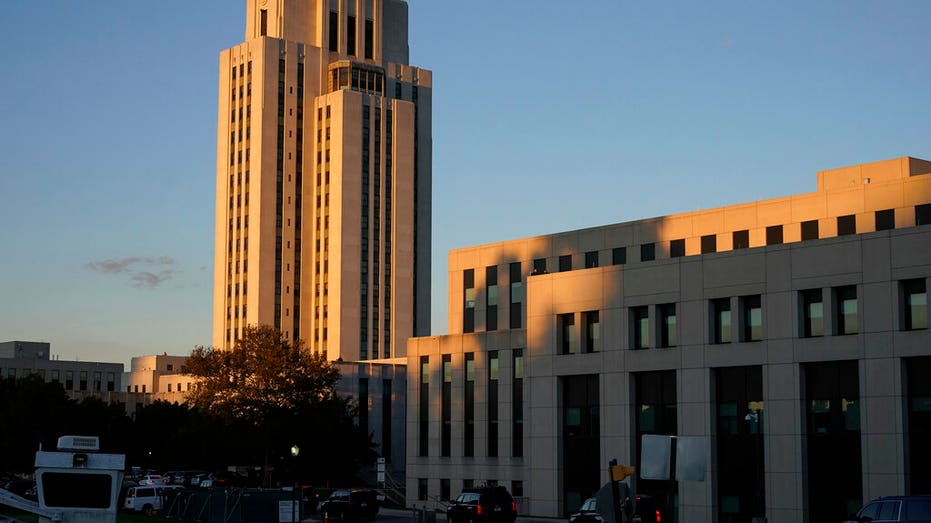White House faces remote-work, security challenges as Trump treated for COVID-19
With the president in the hospital, the administration will rely more on the type of virtual teamwork that many companies have adopted
President Trump’s positive Covid-19 test has created perhaps the ultimate remote-work challenge.
With Mr. Trump moved to the hospital Friday, and many White House aides sent home, the administration will rely more on the type of virtual teamwork that many companies have adopted during the coronavirus pandemic.
The White House has beefed up its digital contingency plans in recent years to prepare for events that could disrupt normal work routines, former officials say. But the new reliance on remote-work tools comes as law-enforcement officials and cybersecurity experts warn of an uptick in hacking threats to government computer systems.
Cybersecurity took on added urgency Friday as Mr. Trump was transferred to Walter Reed hospital, as hackers could try to breach defenses to learn about the president’s condition. People still in contact with Mr. Trump as he battles the infection could find themselves in hackers’ crosshairs, said Theresa Payton, who served as White House chief information officer under President George W. Bush.
“The medical team is now a target,” said Ms. Payton, now the president and chief executive of Fortalice Solutions LLC, a cybersecurity consulting firm for businesses and governments.

President Donald Trump arrived at Walter Reed National Military Medical Center on Marine One in Bethesda, Md., Friday, Oct. 2, 2020, after he tested positive for COVID-19. (AP Photo/Jacquelyn Martin)
COVID-19 CASES MOUNT IN TRUMP’S ORBIT AS PRESIDENT REMAINS HOSPITALIZED
Mr. Trump revealed in a tweet early Friday morning that he and first lady Melania Trump tested positive for Covid-19, soon after news broke of top White House aide Hope Hicks’s infection. As the president worked from his residence Friday, some staffers worked remotely or were directed to leave their offices, The Wall Street Journal reported.
The types of digital tools staffers use to communicate couldn’t be learned. A White House spokesperson didn’t immediately respond to requests for comment.
The president’s personal residence already has secured communications lines and can relatively easily become an alternative work site, Ms. Payton said. But federal officials could bring in even stauncher defenses, such as special video equipment or so-called Faraday cages that shield those inside from digital intrusions.
Nation-state spies are likely to go after not only White House medical staff but that team’s family, home and employees such as nannies and dog-walkers, seeking information about the health of Mr. Trump and the first lady, she said. Any personal or professional device connected to the internet could prove to be a backdoor for attackers, she said.
“I’d say, ‘For all intents and purposes of taking care of the president, here’s your phone and your email’,” she said. “You’re not allowed to use any other equipment and you’re not allowed to discuss the situation at home.”

Nation-state spies are likely to go after not only White House medical staff but that team’s family, home and employees such as nannies and dog-walkers. (iStock) (iStock)
GET FOX BUSINESS ON THE GO BY CLICKING HERE
Those pressures could add to more basic workflow issues for rank-and-file White House staffers now working remotely, said Michael Daniel, who served as the White House National Security Council’s cybersecurity coordinator, the administration’s top cyber official, from 2012 to 2017.
“There’s no question that [White House business] will become more challenging to do,” Mr. Daniel said. “The stuff that’s not as important will drop off the bottom.”
The White House has invested significantly since the Sept. 11, 2001, terrorist attacks in policies and technology to allow staffers to work remotely in an emergency, Mr. Daniel said. Many officials have increasingly turned to virtual private networks that allow them to burrow behind the White House’s computer defenses from home, he said.
But cybersecurity experts warn that connecting to home Wi-Fi networks and mixing personal and professional devices have broadened many organizations’ so-called attack surface during the coronavirus pandemic.
“Any time you disperse the workforce, you’re going to get increased risk,” said Mr. Daniel, now president and chief executive of the Cyber Threat Alliance, an intelligence-sharing consortium.
Staffers who work with classified information likely will have to keep coming to the White House, he said, where data is protected with encryption tools and additional security measures.
Administration officials can set up secure communications at certain off-site locations as needed, Mr. Daniel said. “For a location like [Walter Reed], where a president might go regularly, they will have certain infrastructure ready to go.”




















